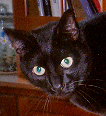June 14: Saigon
It's my last day on the road and, though I'm having a great time in Saigon, I'm ready to go home.
After a walk around town today, I did some gift shopping, mailed a few postcards and spent an hour or so having lunch in the local equivalent of a Starbucks, where I had a glass of "lime mixed with ice" and a croque monsieur sandwich, both of which were quite good but rather expensive for Vietnam. (Still, they cost less than $5 altogether, so it's not like I went out and splurged.)
It's interesting being overseas during the World Cup, which seems to garner almost no interest at home. I considered watching the U.S.-Czech Republic game on Monday night, but couldn't stay awake late enough for its 11:00 p.m. Vietnam time kickoff. Considering how badly we lost, that turned out to be a good decision, I think.
But the interest level of the World Cup here is remarkable. Everywhere I go -- not just in the foreign tourist areas -- are signs advertising that the World Cup will be on at this bar or that restaurant. In Cambodia, it was the same thing. I couldn't believe the number of Cambodians who were asking me about which team I supported, even before the World Cup had started. For the record, it appears that English-speaking Cambodians have a soft spot for England, who they will be cheering for over the coming weeks.
Although I haven't really caught football fever this year -- I would have stayed up late Monday, if it had -- I think I do have a mild case, after all. The first thing I did yesterday morning was turn on the BBC to get the football results.





